Endocrine System
1/28
There's no tags or description
Looks like no tags are added yet.
Name | Mastery | Learn | Test | Matching | Spaced |
|---|
No study sessions yet.
29 Terms
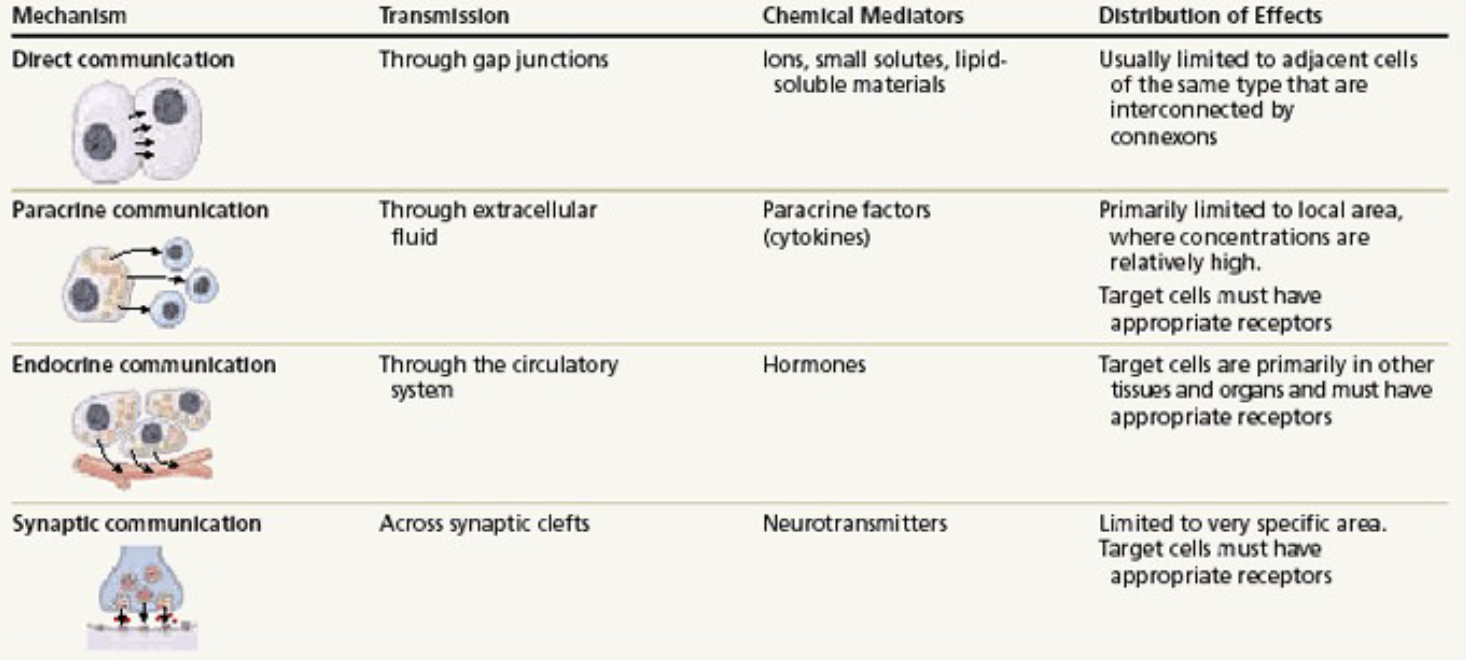
transmission of direct communication
through gap junctions
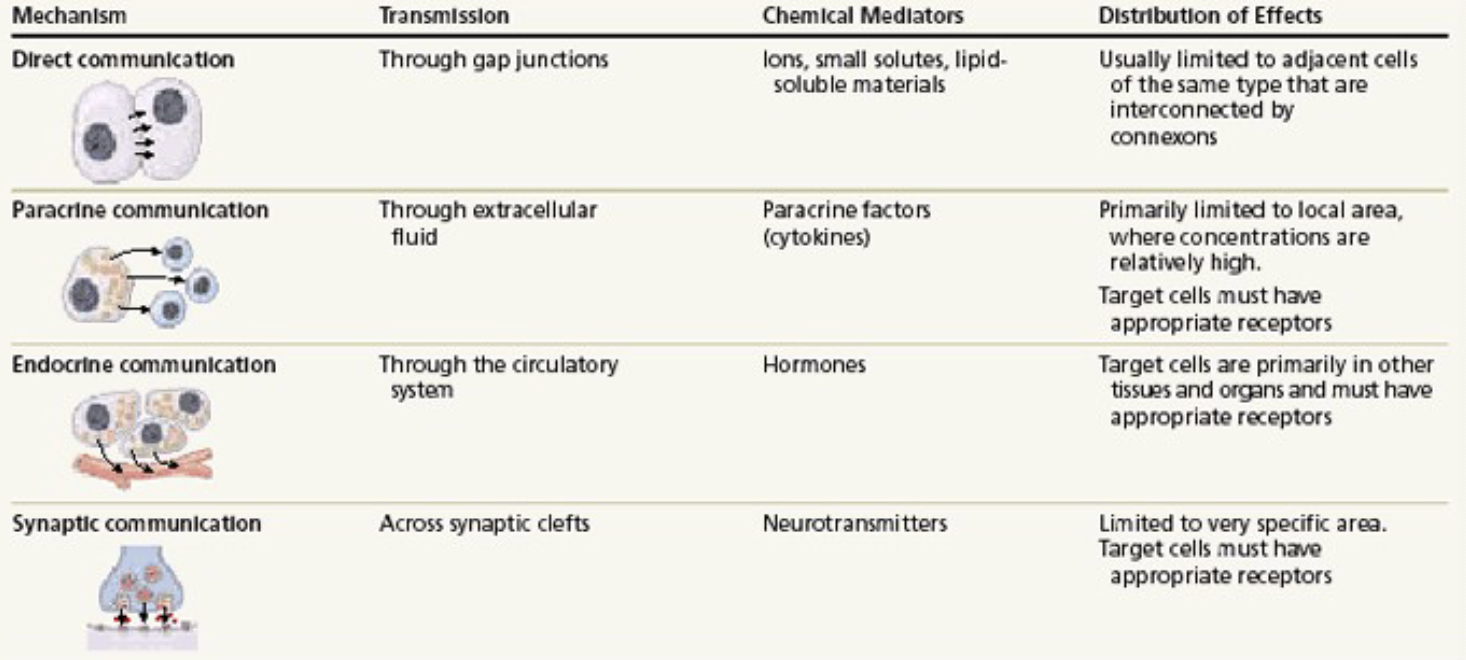
transmission of paracrine communication
through extracellular fluid
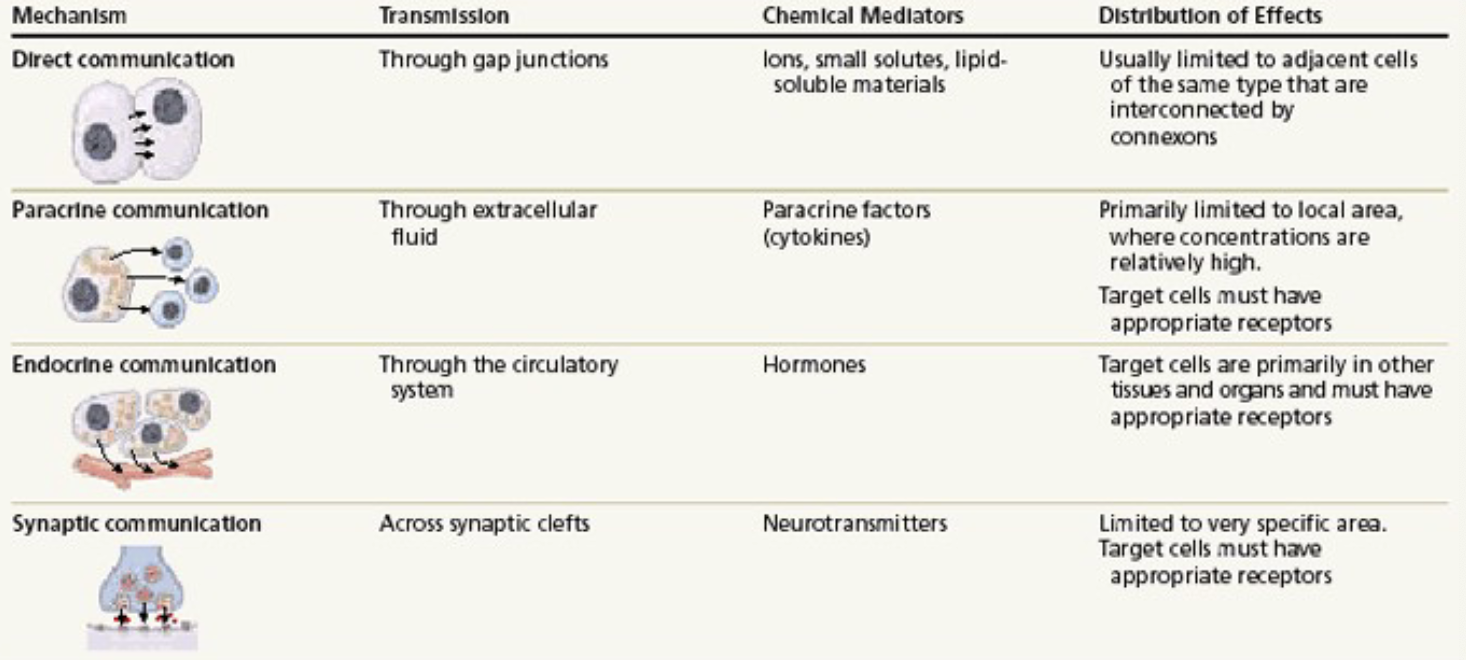
transmission of endocrine communcation
through the circulatory system
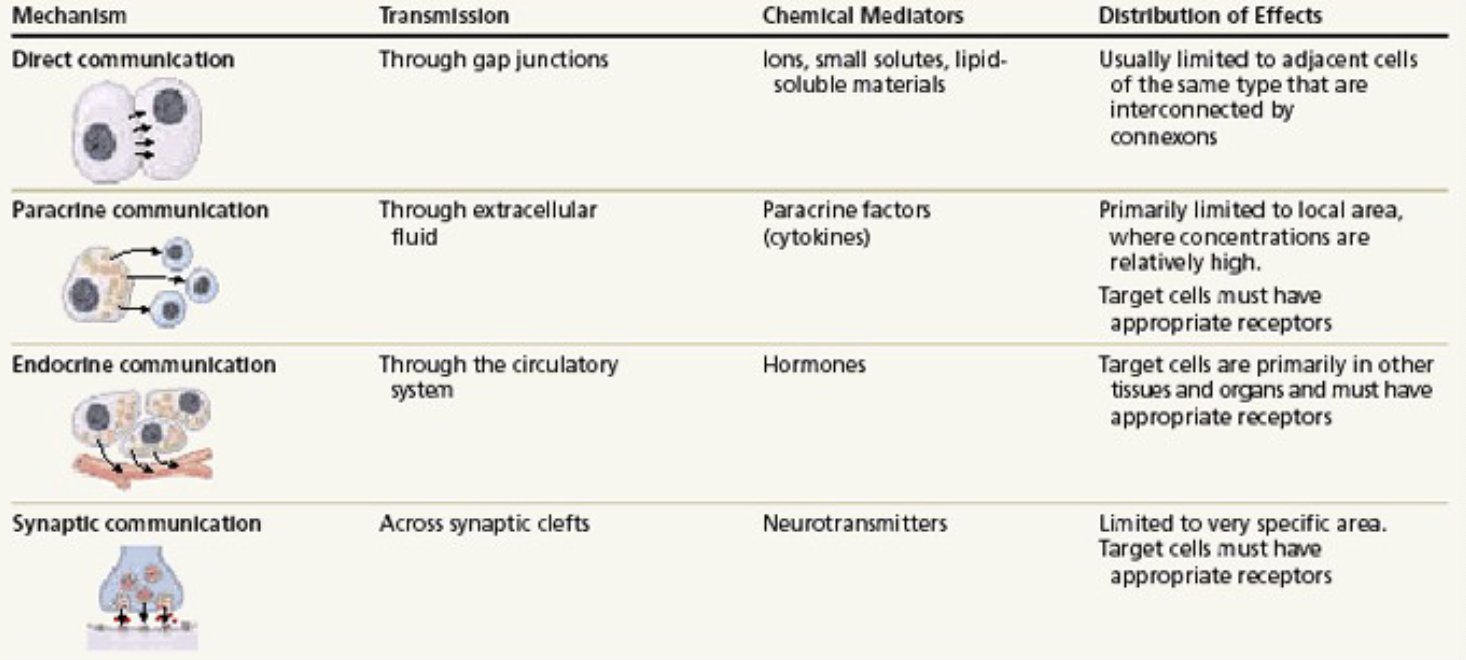
transmission of synaptic communication
across synaptic clefts
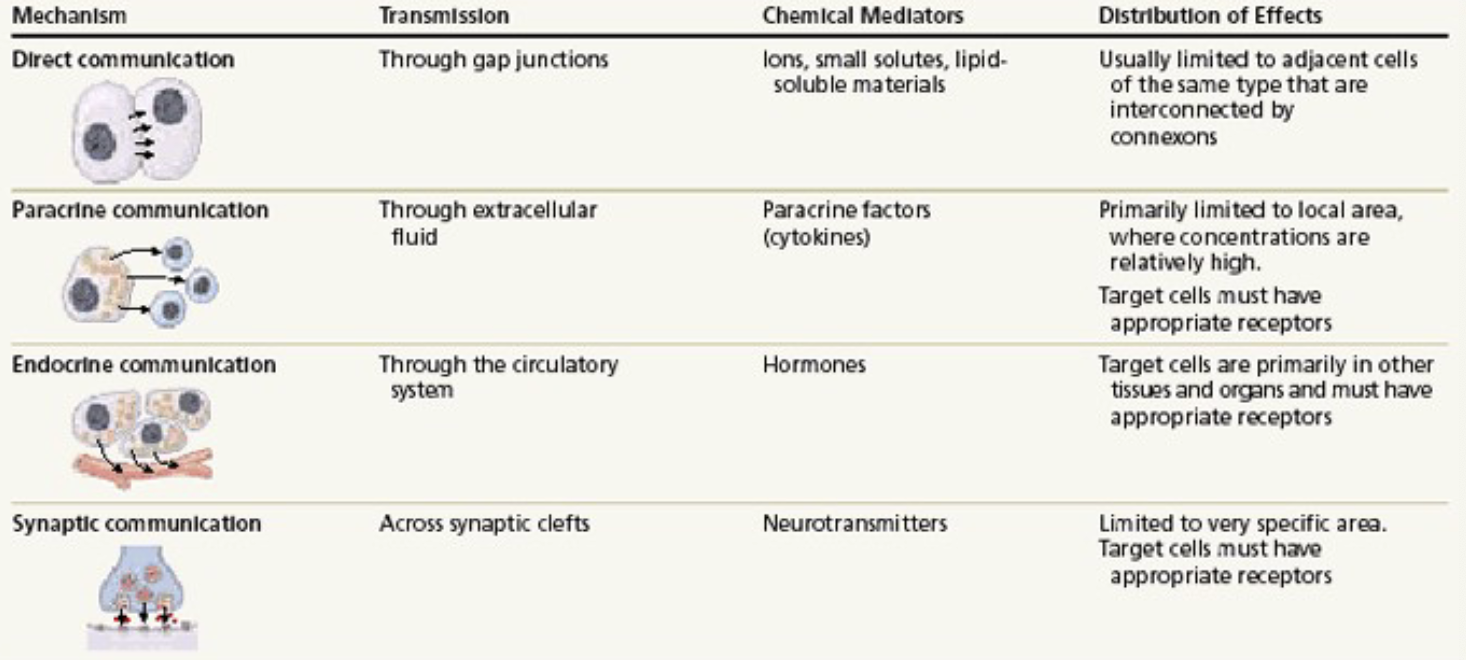
chemical mediators of direct
ions, small solutes, lipid-soluble materials
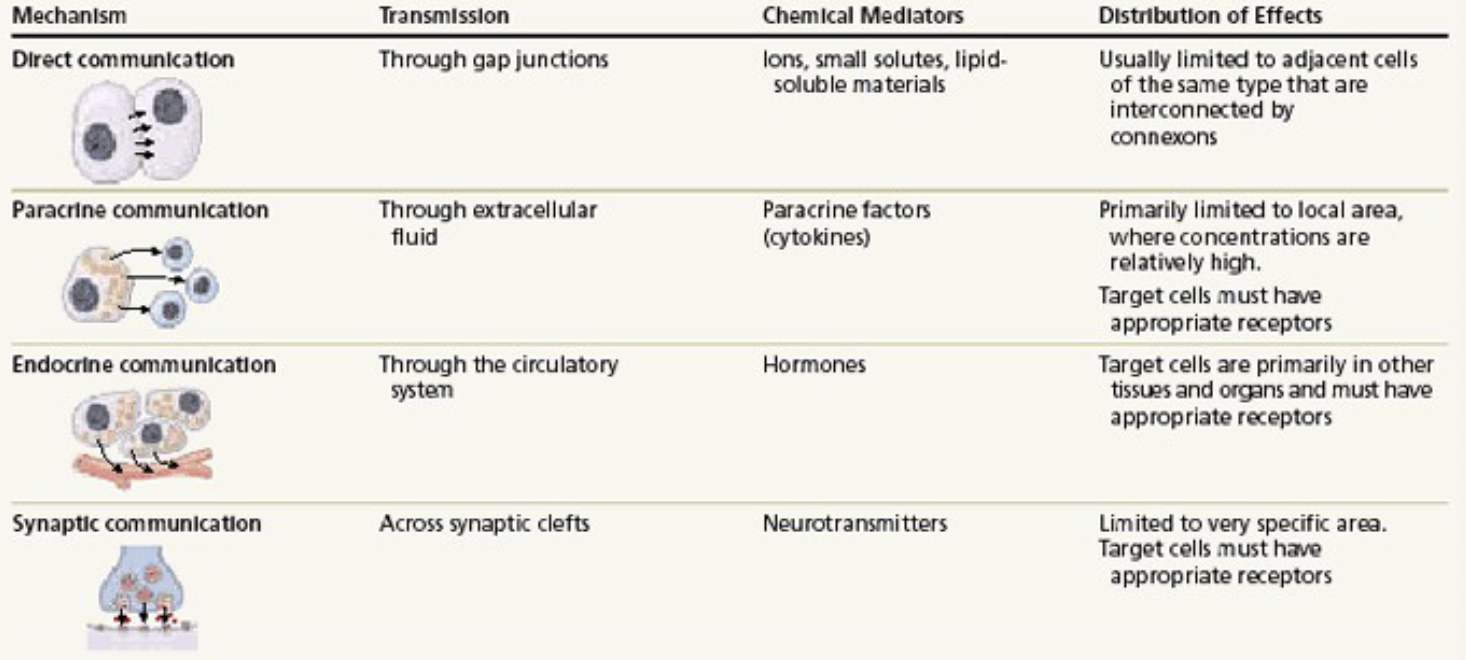
chemical mediators of paracrine
cytokines (paracrine factors)
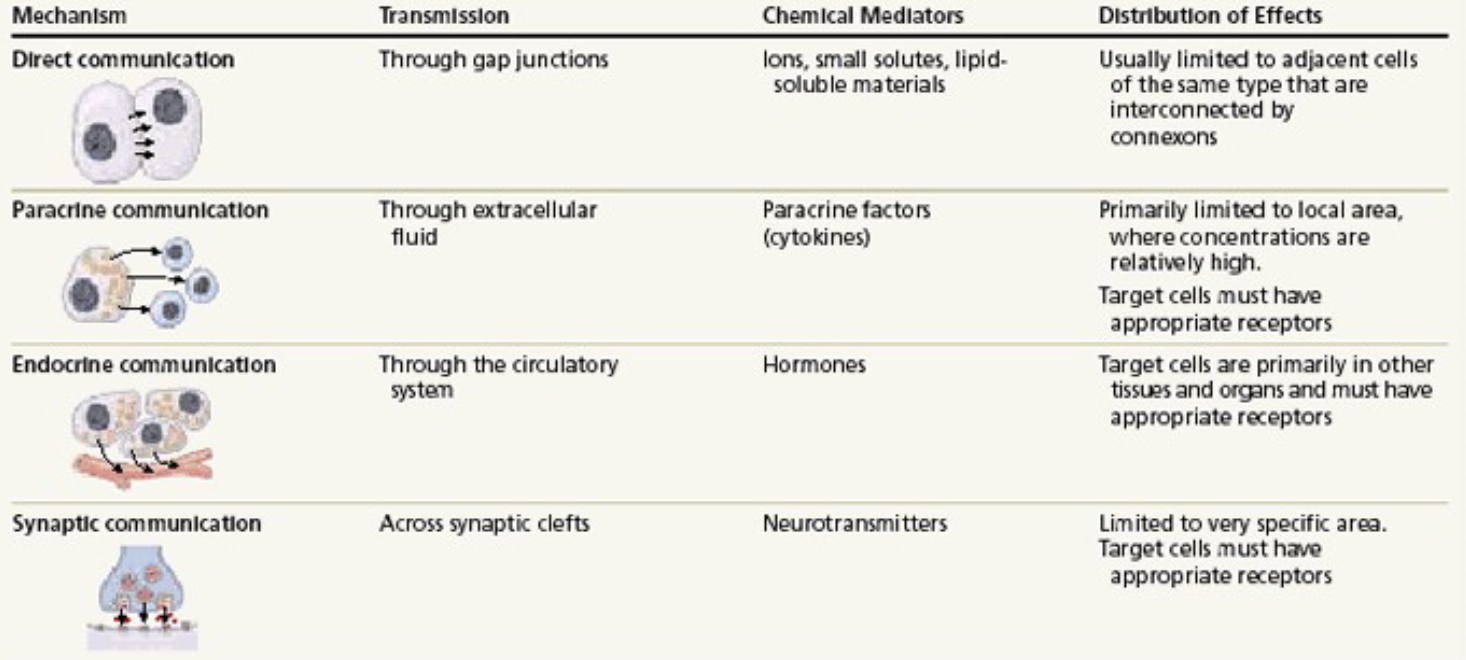
chemical mediators of endocrine
hormones
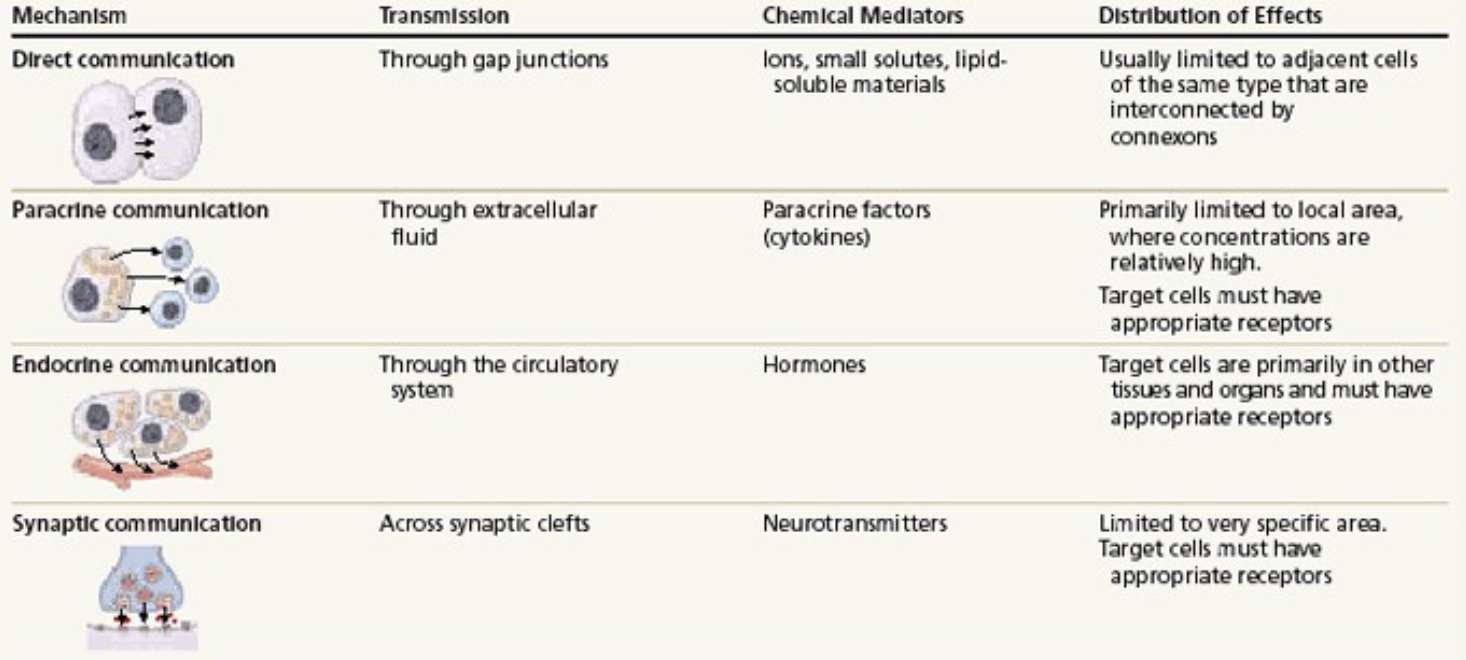
chemical mediators of synaptic
neurotransmitters
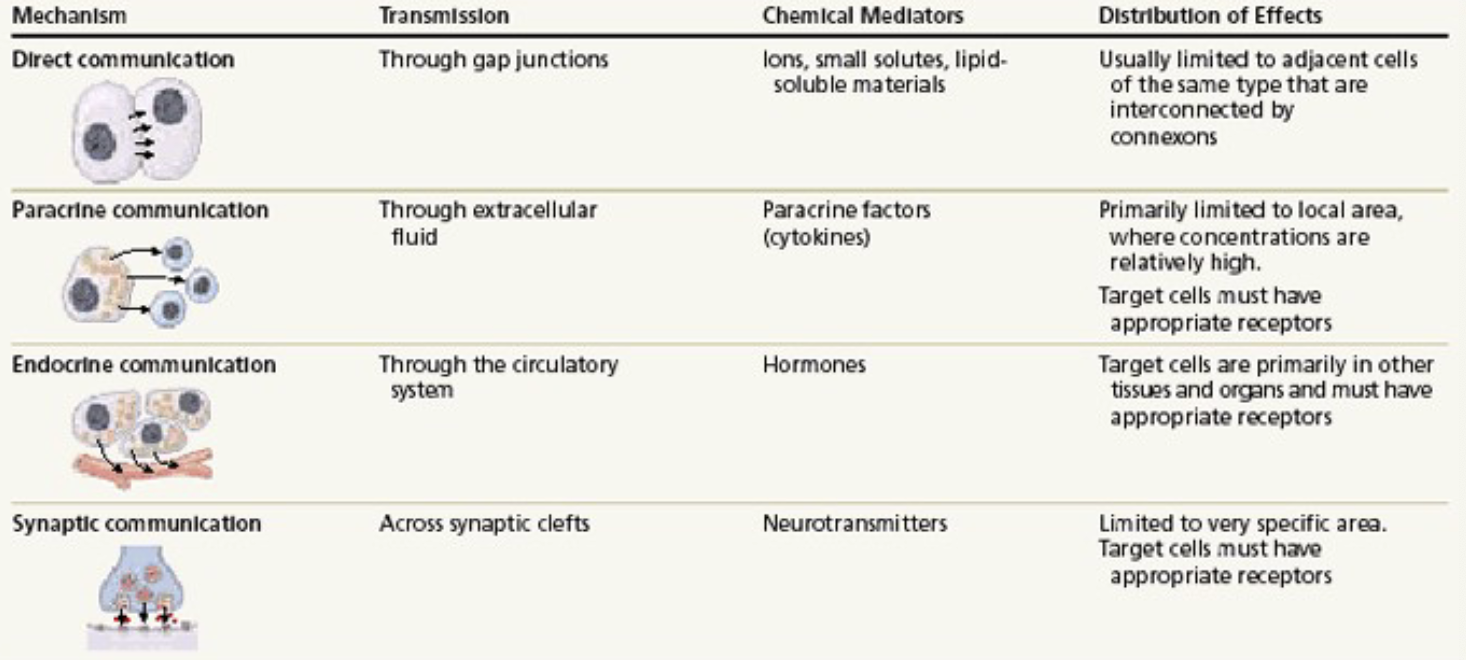
distribution of direct
usually limited to adajcent cells of the same type (interconnected by connexons)
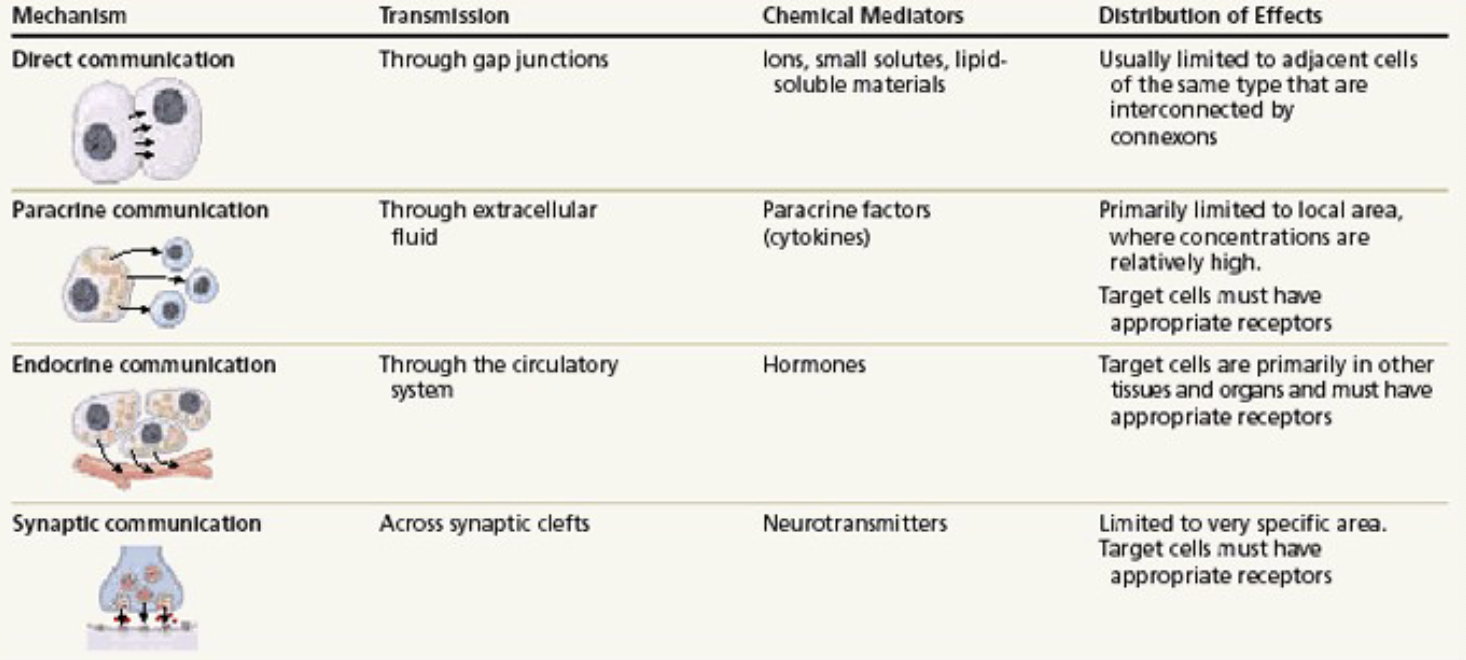
distribution of paracrine
primarily limited to local area (where there are relatively high concentrations)
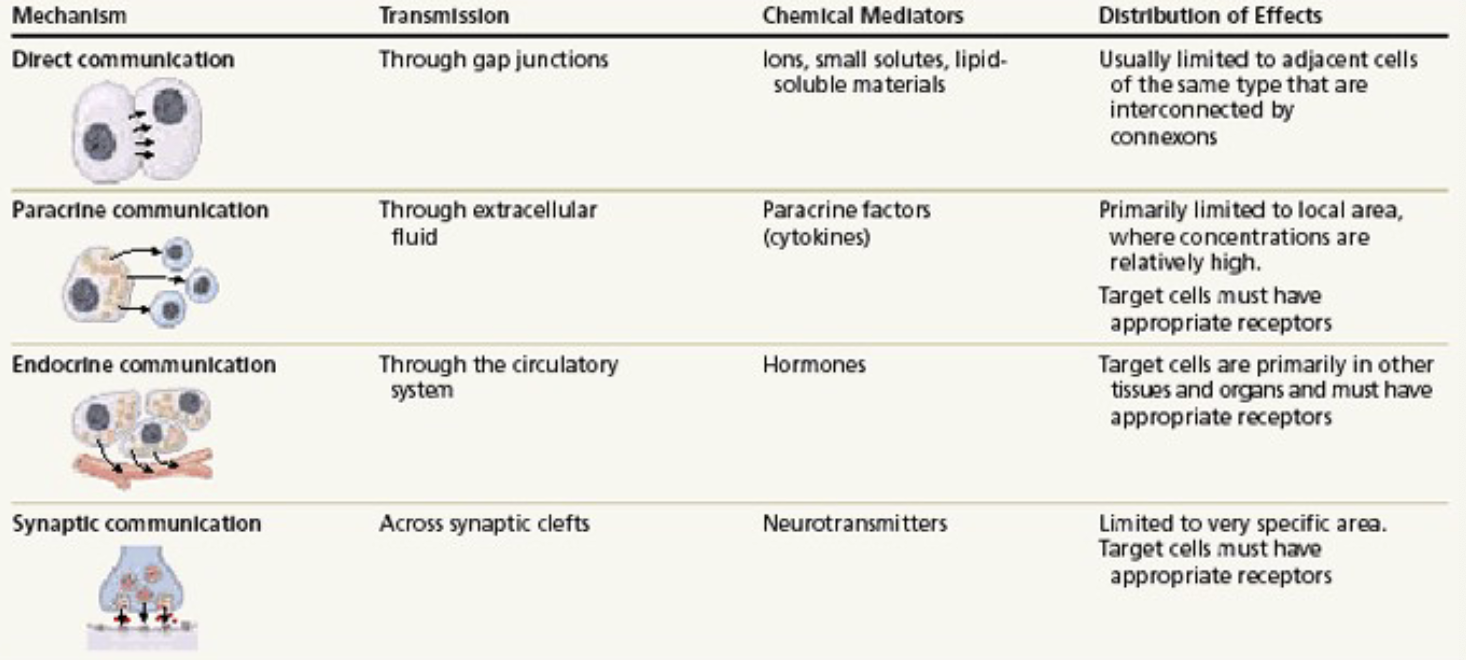
distribution of endocrine
target cells primarily in other tissues and organs
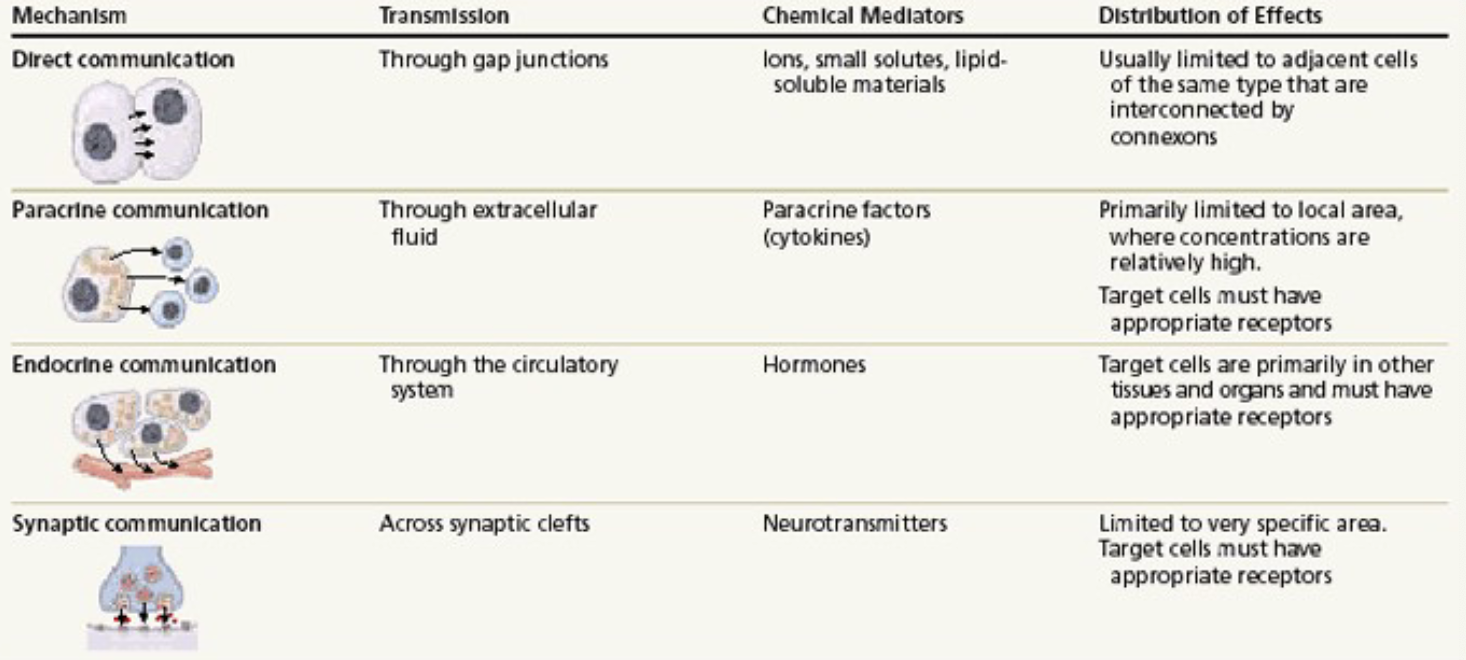
distribution of synaptic
limited to very specific area
nervous performs _____ while endocrine regulates _____
short term crisis management; long term ongoing metabolism
what are the types of hormone groups
amino acid derivatives
peptide hormone
lipid derivatives
adenohypophysis and neurohypophysis
anterior and posterior hypophysis
hypophyseal portal system
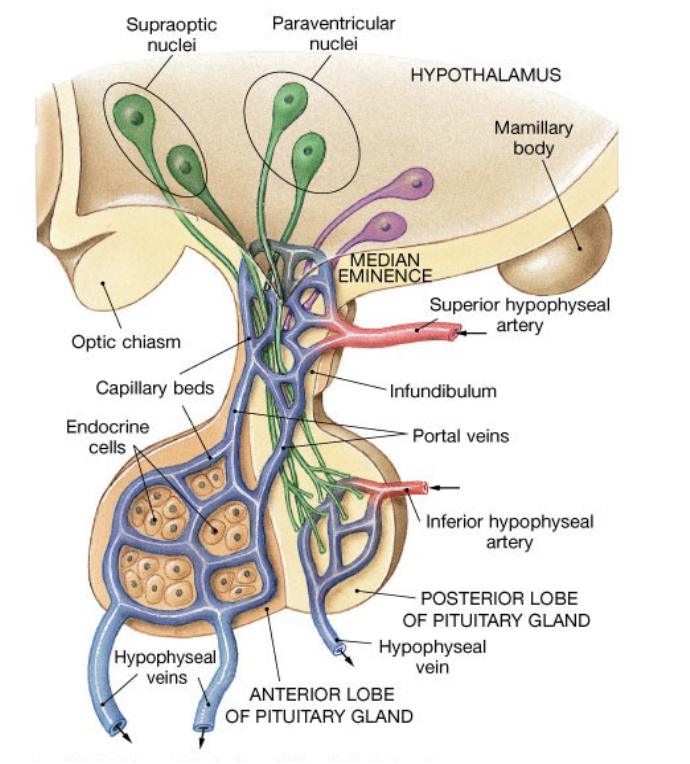
hypothalamus releases two types of hormones
releasing and inhibiting hormones
adenohypophysis releases
growth (STH)
adrenocorticotrophic (ACTH)
prolactin (LTH)
gonadotropic (FSH, LH)
thyroid stimulating (TSH)
MSH
neurohypophysis releases
oxytocin
antidiuretic (ADH)
all seven hormones are created in the
anterior part of the pituitary gland
FSH
ovaries, testes
sperm production, estrogen secretion, ovarian follicles growth
LH
ovulation, maintenance of corpus luteum, testosterone secretion
somatotrophs
secrete GH
thyrotrophs
secrete TSH
gonadotrophs
secrete FSH and LH
lactotrophs
secrete PRL
corticotrophs
secrete ACTH and MSH
paraventricular nucleus produces
oxytocin
supraoptic nucleus produces
antidiuretic hormone (ADH)